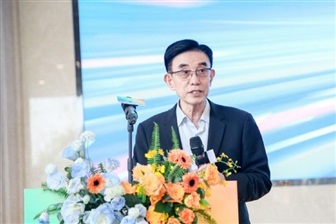Top Chinese equipment supplier: China is 5 gen behind in chip manufacturing due to US sanctions
The United States and its allies have been obstructing the development of China's semiconductor industry, often citing national security reasons. However, the founder, chairman, and CEO of China's Advanced Micro-Fabrication Equipment Inc. (AMEC), Gerald Yin, recently stated that he believes the...
www.digitimes.com
The United States and its allies have been obstructing the development of China's semiconductor industry, often citing national security reasons. However, the founder, chairman, and CEO of China's Advanced Micro-Fabrication Equipment Inc. (AMEC), Gerald Yin, recently stated that he believes the turning point was the comprehensive ban imposed by the US on October 7, 2022. He argues that the true intentions of the US government have become evident since then, leading to China falling behind by at least five generations in semiconductor chip manufacturing technology.
According to reports from
SCMP and Chinese media, Yin pointed out that from 2019 to the present, both the Trump and Biden administrations have implemented 15 rounds of semiconductor-related restrictions, all aimed at curbing the advancement of China's semiconductor industry. This includes measures to maintain at least a five-generation gap between China's chip manufacturing technology and that of foreign countries, including the 14-nanometer process.
Yin, in an uncommon public discussion of the US restrictions, highlighted the impact of the current situation on China's semiconductor manufacturing technology falling behind.
He stated that the gap between China and foreign countries has grown from a 2-generation difference to a 5-generation difference due to the recent restrictions. China has been pushed back from the 3-nanometer process to the 14-nanometer process. This situation only allows China's semiconductor industry to work on mature processes of 28 nanometers and above, which is unacceptable for the Chinese industry.
Indeed, SMIC is one of the few companies in China that has advanced to 14-nanometer production. However, even though SMIC aggressively promoted its 14-nanometer production in the latter half of 2019, the company quietly removed information about its 14-nanometer process technology foundry solutions from its official website in May 2023. Furthermore, during two consecutive financial results conferences in 2023, the company did not mention the 14-nanometer process technology.
While Yin directly pointed out the US intention to hinder China's progress, reports from the same conference suggest that some industry insiders believe that amidst the US blockades against China's semiconductor industry, there is an opportunity for China to foster the growth of its semiconductor equipment sector.
Up to now, there are already over 200 Chinese companies in the semiconductor equipment and components sector. However, the current fragmented nature of the industry in China means that some local chip equipment and materials cannot meet the core needs of wafer fabs. In the short term, it remains challenging to replace imported chip equipment.







